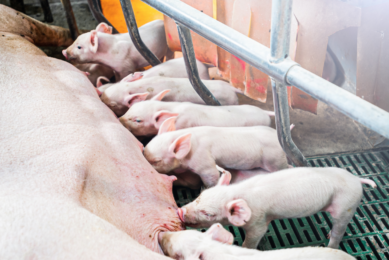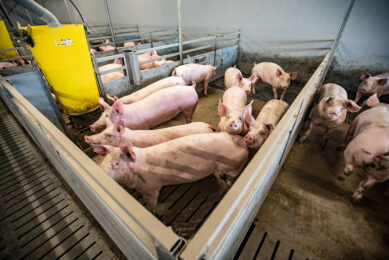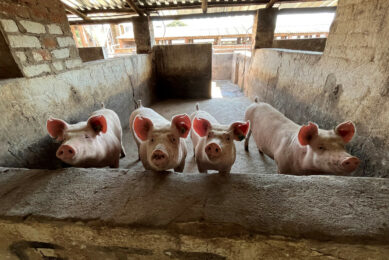Scaling back to fewer sows in bad times
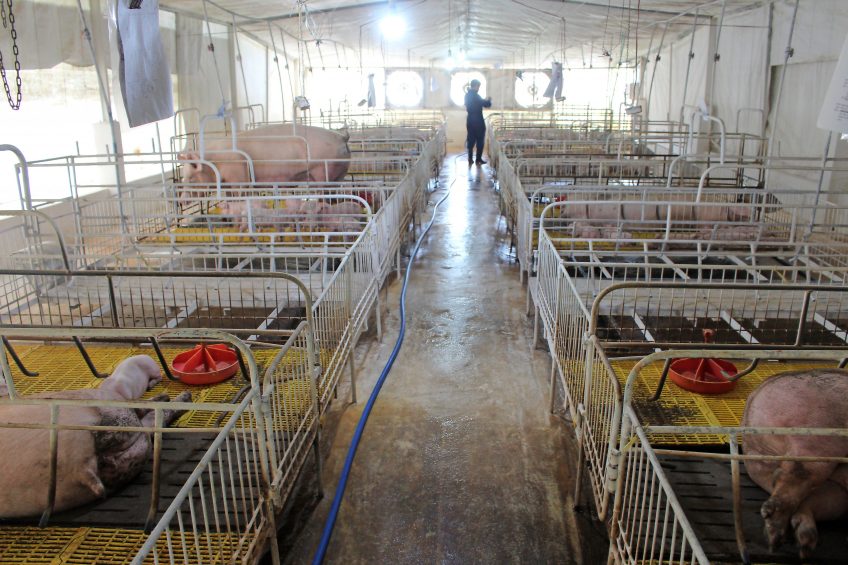
The pig market in Vietnam is often very volatile with demand and supply creating unpredictable losses or profits. Tan Uyen farm, near Ho Chi Minh City responds to that market situation by adjusting the total number of sows.
At the entrance of the farm an unusual collection of animals awaits the visitors. At least half a dozen dogs enjoy the sweltering heat, while behind them 2 geese unconventionally share a cage with a 3m long python. A few months ago, the snake was found in the direct vicinity of the farm – something that is fairly common in Vietnam – and in order to avoid any problems on-farm, the animal was kept in captivity.
|
Pigs on-farm
Dogs, geese or snakes, however, are not the main reasons for visiting – the pigs at the farm are. Named after this district in Binh Duong province, Tan Uyen farm is located about 60km north east of Ho Chi Minh City, and in good times can run at a capacity of 1,200 sows. By the end of 2017, however, the farm was running at about half that amount.
China stopped importing Vietnamese pigs
Ever since the end of 2016, the pig market in Vietnam has been relatively bad. In generaly, a relatively large proportion of the country’s pig population is sent across the northern border into China, but the large neighbour changed its mind about pigs from Vietnam in late 2016. Political reasons are mentioned, as well as ‘diseases’. The fact is that with this sudden lack of export opportunities, the Vietnamese market rapidly reached a situation of oversupply.
Dealing with the oversupply of on farm pigs
For opportunistic pig owners, often having only a few animals, it is easy to change to other means of substance, but for Tan Uyen farm, it means calculating at which numbers it is best to operate.
By gradually culling the older sows, the farm scaled back to just over 600 sows, with the intention to go back to 1,200 as soon as the market situation would allow this. During these days of downsizing, the farm’s number of employees is also limited, with the key people remaining employed.

Farm manager
The day-to-day business at the Tan Uyen farrow-to-finish facility is taken care of by farm manager Bui Dinh Ngoan, aged 45. Originally educated as an electronic technician he turned to his relatives for employment about 10 years ago when he lost his job at a Japanese company. They decided to start a farm on a stretch of land of roughly 10ha.
Surrounded by a plantation of pomelo trees for reasons of isolation, he developed a farm for 1,200 sows – and had a great say in how the farm had to look. Mr Ngoan used his technical knowledge, e.g. for designing and creating his own gestation crates, for making own farrowing pens (slightly larger than conventional with a size of 2.2 x 2.2 m), and for making his own curtain system for natural ventilation purposes, using very strong fishing line to keep it all together.
The farm grew to have 29 buildings:
- 6 gestation houses;
- 6 farrowing houses;
- 3 houses for weaning and nursery;
- 14 Houses for finishing pigs.

Pig feed & water
The pigs on farm are fed manually by farm staff that adds the pelleted feed in troughs. All pigs receive a mixture based on corn, broken rice, rice bran, fish meal and soybean meal. The farm works with 7 formulations:
For market pigs:
- a creep feed
- a prestarter
- a starter feed (until 45 days)
- a grower feed
- a finisher diet
For sows there are:
- gestation diet
- lactation diet
All diets are being made and bagged at Rico Feed and every day a truck with over 20 tonnes of feed visits the farm.
For hygiene purposes, Mr Ngoan would like to have the entrance of the farm rearranged in such a way that in the future trucks do not have to enter the farm, but that they can be offloaded off-site. For this, a piece of land of the neighbours needs to be acquired, which is yet to happen.

Antibiotic growth promoters banned from feed
In April 2017, Vietnam tightened its legislation, as it banned the use of antibiotic growth promoters in feed. As a result, the compound feed at Tan Uyen Farm does not routinely contain antibiotics. Mr Ngoan explains, “If there is a problem, we just call Rico Feed, and they can add it to the feed.”
Water is pumped up from the ground and filtered on the spot. In addition, there is also water used for the typical ‘baths’ in the finisher rooms. Just like the feed, the water also has to be switched on manually on the farm.
Gestation houses
The farm takes care of its own reproduction, so that only once in a while some fresh genetics from outside is necessary. Basically all animals are crossbreeds between Duroc, Piétrain, Large White and Landrace. Sows receive a series of vaccinations, against Classical Swine Fever (CSF), Aujeszky’s Disease, parvovirus, PRRS, PCV2 and Foot-and-Mouth Disease (FMD).
The gestation houses, just like all other houses on the farm, are equipped with evaporative ventilation as well as curtains. Against the steel ceiling, there is a plastic ceiling, which is done for isolation purposes.

Lactation houses
Each of the 6 houses contains roughly 50 gestation crates. They are elevated slightly above the ground, which allows easy cleaning when the animals are gone. At the time of the visit, about half of the pens were empty – outside cleaned, yellow, plastic slats were piled up, waiting for future inhabitants.
Litter sizes are typically between 8 and 12 sows. The exact number of piglets weaned per sow is difficult to estimate, says Mr Ngoan, but the number of finished pigs sold per sow is about 20-21. The piglets are being castrated at 4 days of age and will be vaccinated against M. hyo, PCV2, CSF, PRRS and FMD.
Weaning & nursery houses
The pigs are weaned at least 21 days of age and will stay in the nursery facility for about 45 days, until they weigh about 25 kg.
Finisher houses
The finisher houses contain about 20 pens per house. As is common in many farms in South East Asia, the finisher facilities come with a bath, to cool the animals down. In this environment, the pigs typically achieve a feed conversion rate of 2.4 to 2.5.
When it is time for the finishers to be sent for slaughter, they are lined up behind the entrance gate, in temporary pens. The animals will have to be weighed on scales before they are picked up by a truck, which will load the pigs on the other side. They also receive a tag around one of their legs. This contains a QR-code, so the state-owned slaughterhouses can always see from which farm the animals hail.

The pigs are picked up by so-called ‘collectors’, who will sell the finishers to the slaughterhouses that pay the best price. Pigs from Tan Uyen can therefore end up in a supermarket, but also on a wet market.
Occasionally a dead pig has also been presented to the python. At the time of the visit, the animal did not appear to be interested at all.

Read more about Farm Visits in countries all around the world with this special tool
This farm visit was made possible with the kind assistance of Lallemand Animal Nutrition.


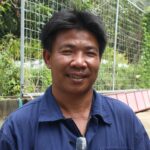 Profile
Profile
